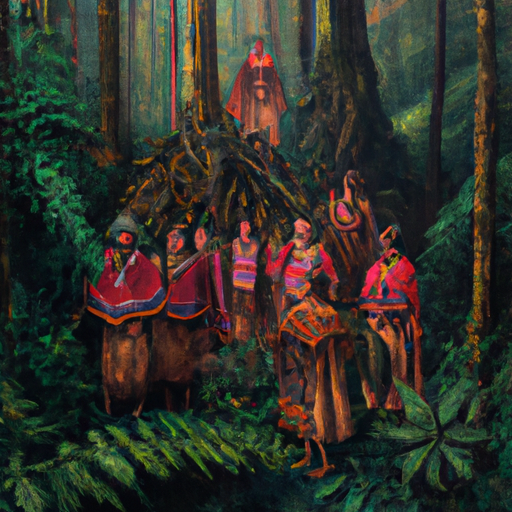About 1.5 million Indigenous people reside in the forests of the Amazon in South America. Despite deforestation and fires that have impacted the region, Indigenous communities are playing a crucial role in protecting the most intact parts of the Amazon.
The Importance of Healthy Forests
Standing, healthy forests have the ability to absorb carbon dioxide and store it within their trunks, limbs, and roots. However, when trees are cut down or burned, the carbon they have absorbed is released back into the atmosphere. Currently, the Amazon is still a net carbon sink, meaning it captures more carbon dioxide than it emits. However, it is on the verge of becoming a net carbon source. Approximately 17% of the Amazon’s forests have been lost over the past 50 years.
Indigenous Territory and Deforestation
The map above showcases Indigenous-managed territories in the Amazon River basin, spanning multiple countries. There are approximately 385 Indigenous groups residing in about 2.4 million square kilometers of Amazonia. Research suggests that these Indigenous communities are effective defenders against deforestation and are protecting carbon-rich areas of the Amazon.
According to Peter Veit, a senior fellow at the World Resources Institute (WRI), “Indigenous communities are unsung heroes of conservation, and many actively monitor their forests.”
Research Highlights the Role of Indigenous Communities
In January 2023, research conducted by the WRI revealed that forests managed by Indigenous people and other communities between 2001 and 2021 functioned as carbon sinks, while forests not managed by Indigenous communities were net carbon sources. This study built upon previous work that utilized data from Landsat satellites and NASA’s ICESat mission to map carbon uptake and emissions by forests worldwide. It was discovered that forests globally absorbed twice as much carbon as they emitted during the same period.
The Threat of Deforestation in Brazil
In Brazil, forests outside of community protection are being lost due to commercial farming, cattle ranching, extractive industries, infrastructure development, and other factors. Biomass data from NASA’s GEDI mission highlights the severity of deforestation in the Brazilian state of Rondônia, which is one of the most deforested areas in the Amazon. However, the territory of the Uru-Eu-Wau-Wau Indigenous community in the western part of the state stands out as an area with dense biomass remaining.
Combatting Deforestation with Indigenous Communities
The continuation of deforestation poses a significant threat to the Amazon’s role as a carbon sink. The WRI is actively working with Indigenous communities to utilize satellite-based forest monitoring data from Global Forest Watch (GFW) to detect deforestation and alert them promptly. An analysis conducted in 2021 demonstrated that after 36 Indigenous communities in the Peruvian Amazon utilized these satellite-based alerts, deforestation rates dropped by 52% in just one year.
























